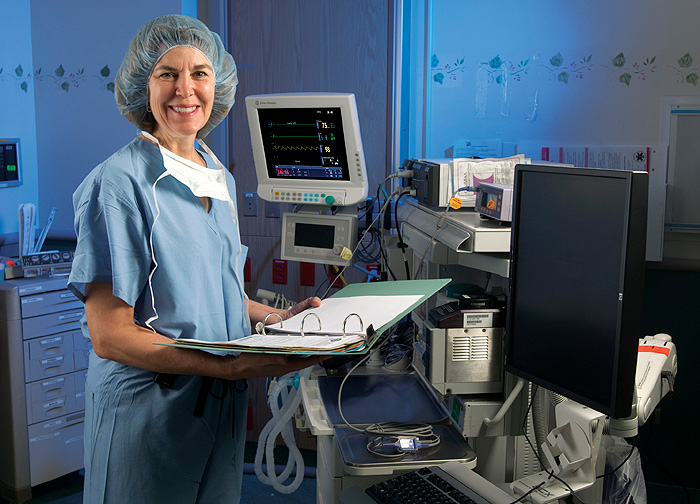The statistic is astounding. More than 40 percent of women in the United States are now obese and the rise in the growth in that percentage has made uterine or endometrial cancer the fastest growing cancer among women in the United States.
“The number one culprit behind the rise in incidence of uterine cancer is obesity,” says Dr. Molly Brewer, chair of the Department of Obstetrics and Gynecology who also oversees UConn Health’s new Women’s Center. “Research data shows as the prevalence of obesity has risen over the past few decades so has the rate of endometrial cancer as well as the mortality from this cancer.”
Obesity is carrying extra body fat leading to body mass index (BMI) calculation of 30 or greater. A normal or healthy weight has a BMI below 25 while being overweight ranges from 25 to 29. In addition, if a woman has a waist circumference that is more than 35 inches it signals she may be carrying extra belly fat, placing her health at risk. Free and easy-to-use online self BMI calculators are available by the Centers for Disease Control and Prevention (CDC) and other organizations.
Excess fat tissue can lead to higher levels of the hormone estrogen in the body which research has associated with various women’s cancers. Obesity is also linked with an increased risk of breast and colon cancers in women. Also, a sedentary lifestyle and not exercising causes a buildup in the body of the stress hormone known as cortisol which can lead to chronic inflammation.
According to the National Cancer Institute, compared to their healthy weight peers, overweight women are up to four times more likely and obese women up to ten times more to develop uterine cancer, when malignant cancer cells grow in the lining of the uterus known as the endometrium. For those who are very obese their risk is thirty times more likely. Obese women used to develop early stage Grade I cancers that were curable with surgery alone but we are now seeing more high grade metastatic endometrial cancers in very obese women that require more extensive treatment to cure.
While it may be more widely known that obesity makes women at higher risk for developing heart disease, stroke and diabetes, many females may still not realize it also increases their risk of developing cancer of the uterus, says Brewer.
In addition to obesity, other uterine cancer risk factors may include: not childbearing; starting your menstrual period at a very young age or going through menopause later than expected; having taken estrogen therapy or hormone replacement therapy; and a family history of the cancer.
According to Brewer, an annual OB/GYN screening and alerting your doctor of any worrisome symptoms is critical to maintaining your health and catching cancers such as uterine cancer as early as possible.
“If there is something going on with you we want to pick it up early,” says Brewer. “The earlier the better so we can treat it and cure it. If a women is not seen on routine basis by her OB/GYN, a cancer may not be picked up early and may become more difficult to treat or put her life at risk.”
Compared to other cancers uterine cancer is fairly common. In fact, endometrial cancer makes the top 10 list of the most common cancers among men and women. In 2017, the National Cancer Institute estimates that more than 61,000 new cases will be diagnosed and nearly 11,000 women will die from the disease. If caught early the five year survival from the disease is 95 percent. But if caught at later stages after it has spread the five year survival rate can drop down significantly to 68 percent or lower.
So how can you reduce your chances of developing uterine cancer?
“Interestingly, very similar to preventing heart disease, women need to stay vigilant in their maintaining of a daily healthy lifestyle,” says Brewer. “Daily exercise and a good diet is really key. The number one thing I tell my patients to do is exercise daily to maintain their current and long term health.”



